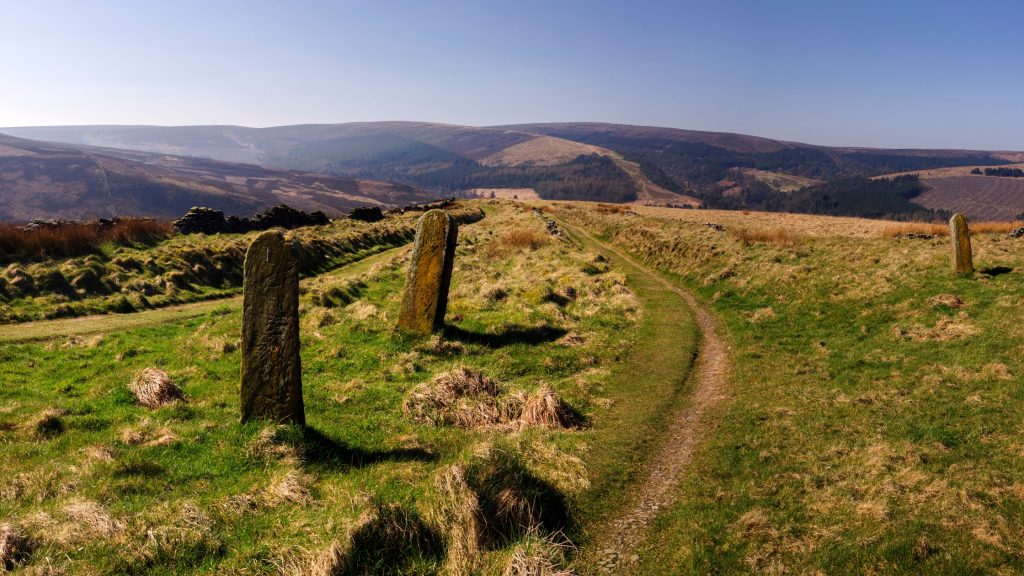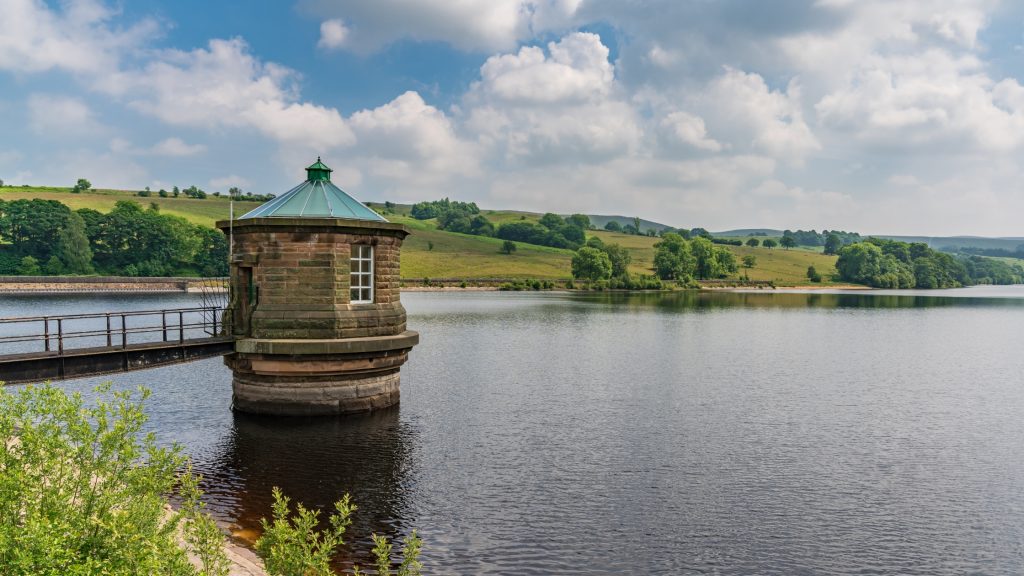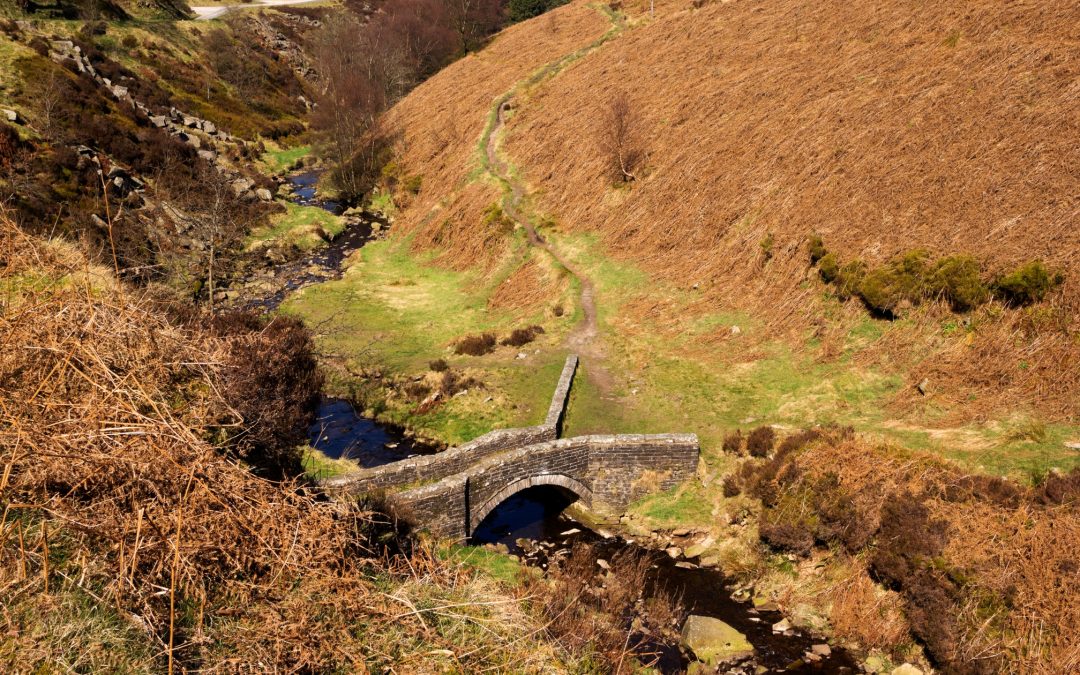I’ve always been a fan of a good walk, and the Goyt Valley Way is one of my favourites. It’s a captivating trail nestled in the heart of the Peak District, and it’s got a bit of everything. From serene woodland walks to challenging hill climbs, it’s a real treat for the senses.
You’ll find yourself immersed in the stunning scenery, with the River Goyt as your constant companion. It’s not just about the walk though, there’s history to discover too. The remnants of old mills and the historic Errwood Hall add a touch of intrigue to your journey.
So, if you’re looking for a walking path that’s got it all, look no further. Trust me, the Goyt Valley Way is a path that’ll keep you coming back for more.
Trail Overview
Wandering the Goyt Valley Way isn’t just about leg stretches and bird-eye views. It’s a journey dipping in and out of nature’s artwork. Walking along the trail, you’ll fall in love with the wide variety of experiences it offers.
Picture those seamless transitions from peaceful woodland walks to challenging hill climbs. One moment you’re in the depths of nature with mighty oak and beech trees towering above you, their leafy canopies filtering sunlight to create a kaleidoscopic play of light and shadow on the trail. The next moment, you’re climbing windswept hills that offer breathtaking panoramic views. A sneak peek into the very soul of the Peak District.
It’s not all about moving uphill though. The route also takes you down into the valleys where the gurgling River Goyt becomes your companion. Its rippling water reflects the shifting moods of the surrounding scenery. An ecstatic moment for any avid nature avid.
The Trail’s Significant Historical Elements
Submerging into the Goyt Valley Way’s history as you follow the trails, you’ll discover its other fascinating facet. Time-worn stone walls hint at past lives, from the remnants of old mills and the stately Errwood Hall. For me, these historical landmarks offer a beautiful contrast to the nature-infused journey.
The trail mirrors a time when industrial activities and domestic life thrived among these hills and valleys. A time when the rivers’ powerful force was harnessed to run entire industries. Today, what’s left are their charming ruins, quietly bearing witness to bygone eras.
So, why the Goyt Valley Way?
A walk down Goyt Valley Way rewards with
- A variety of natural landscapes
- Historical landmarks
- Breath-taking views and peaceful spots
It’s a walking path that offers a complete and memorable experience. For me, it’s not just a scenic walking trail; it’s a pathway that takes you through time, interweaving nature’s grandeur with strands of local history. You get to be a part of the evolving narrative of this place with every step you take.
Are you ready to dust off your walking boots and join this captivating journey down the Goyt Valley Way?
Scenic Woodland Walks

I must say, there’s a unique charm about woodland walks on the Goyt Valley Way. The sound of leaves crunching underfoot, the enchanting play of light and shadow, whispers of the wind rustling through the dense canopy of leaves… it’s like being in a fairytale landscape.
Throughout the walk, you’re surrounded by a rich tapestry of colour. In the spring, the woodland floor transitions into a carpet of vibrant bluebells. By autumn, the foliage paints an impressive display of reds, oranges and golds. In winter, snow transforms the woods into a frosty wonderland. And at the height of summer, the shade beneath the lush green canopy offers a refreshing respite from the sun’s warmth.
Equally impressive is the variety of flora and fauna. I’m not a botanist, but I’ve seen enough varieties of flowers, mosses, and fungi to appreciate the diversity of this woodland ecosystem. And oh, don’t get me started on the wildlife! Those lucky can spot squirrels, rabbits and a variety of birds like woodpeckers, robins, and owls.
The woodland walks also offer a kind of serene solitude. Moving deeper into the forest, the human-made world blends away, replaced only by the symphony of nature around. You can’t help but feel deeply connected to the natural world.
One stand-out feature of the Goyt Valley Way is the Brook House Wood, loved for its meandering streams and century-old trees. Walking through this area is like stepping back in time, a chance to imagine the land as it once stood, untouched by industry or farming.
Another spot worth visiting is the Woods near Toddbrook Reservoir. These woods are guilt-edged with vibrant, wildflowers during spring, creating a spectacle that nature enthusiasts will find hard to forget. And it’s not just about the flowers; the tranquil reservoir waters also make for a picture-perfect vista.
While I highly recommend these specific places, the Goyt Valley Way is packed with woodland gems waiting to be discovered. No two walks are ever the same, thanks to the ever-evolving nature of the woodland landscape.
Challenging Hill Climbs
As I ventured deeper into Goyt Valley Way, the terrain shifted dramatically. The hills undoubtedly present a bit of a challenge, but they offer an excellent opportunity for heart-pumping action and a break from the tranquil woodland walk. Hill climbing isn’t just about elevated heart rates, slippery slopes, and sweaty brows; but also the sense of achievement that only comes from conquering a steep incline and the breathtaking panoramic vistas that punctuation my efforts.
The first significant rise appeared as I approached the Rhodeswood Reservoir. There was a sign indicating an uphill path and seemed to almost dare me to take it. With some determination and curiosity nudging me on, I took a deep breath and begun my ascent. I couldn’t help but notice the sturdy, comforting presence of the silver birch and rowan trees that lined the leaf-strewn slope. It was a tough climb, no doubt, but the thudding of my heart matched the rhythm of my footfall, creating an almost hypnotic routine as I made my way upwards.
After what felt like hours, the brow of the hill finally came into sight. The summit hasn’t been more rewarding. The scenic view of the reservoir was simply extraordinary – an artist’s dream come true. No photograph could do justice to the real-life canvas unfurling below, with the sparkling water etching a fabulous, meandering trail amidst vibrant patches of lush greenery. The wind atop had a certain freshness to it, perhaps being undisturbed and unhampered by the towering trees below.
Impressive hills kept appearing at regular intervals, each one testing me further than the last. Yet, each was unique in its character and what it offered at the summit. A second hill, near Kinder Scout, was particularly noteworthy. It stood as a sentinel, overlooking vast expanses of the woodland. The climb was arduous, but reaching the top only to be met by an unfettered view of the woods blanketed in a luminous mist, in a scene that echoed tranquillity and wild beauty, made it more than worth the struggle.
History and Heritage
As I trudged along the Goyt Valley Way, I couldn’t help but appreciate the rich heritage of the path I was treading. With every step, layers of history unfolded beneath my boots. The route, steeped in history, boasts a fascinating past that deserves its own spotlight.
Evidences of early human activity in the valley date back as far as the Bronze Age, with the remnants of ancient burial mounds spotted around the region. Prehistoric tribes found this area conducive for settlement, the fertile valley providing ample provisions for their needs. Walking the same grounds that they once tread feels truly humbling.
From the 18th century onwards, significant industrial activity began to happen in the valley. Coal mining, silk spinning, and cotton weaving became key industries, with several mills popping up along the river. The industrial trail of Goyt Valley Way is a nod to times when the valley thrummed with the sounds of production.
The raison d’être of Goyt Valley Way, the Bunsal incline, was a remarkable feat of Victorian engineering. Built in 1831, it was part of the Cromford and High Peak Railway. Drawing energy from steam and gravity, wagons were hauled up and down the incline. Even after its disuse, the venerable Bunsal incline stands proud, and traversing it is a testament to past advancements.
As the industrial era faded, a new chapter in Goyt Valley’s history started. The valley underwent massive transformation with the construction of two reservoirs, Fernilee and Errwood during the 1930s. The reservoirs, initially built to supplement Stockport’s water supply, are now significant attractions on the walk.
Experiencing the Goyt Valley Way is like leafing through a history book filled with tales of early inhabitants, industrious periods and transformative changes. Every footfall echoes centuries of stories, enriching the walker’s journey. With every incline conquered and vista admired, we also become a part of its continuing narrative.
The River Goyt

The River Goyt lies as the heart of the Goyt Valley Way. Winding through the tranquil beauty of the valley, it acts as a lifeline, providing vital sustenance to a rich variety of flora and fauna. Each babble and ripple of the river yields a story from the bygone era. Delving into its tale, it’s vital to remember that the Goyt isn’t just a river, but also the essence and lifeline of the valley.
As you walk along the river’s edge, take a moment to think about its journey from the moorlands of the Peak District, through the bustling towns of New Mills and Marple, and finally converging with the river Tame to form the Mersey. It’s a voyage that’s spanned millennia, continually shaping the landscape that we so admire today.
With deep-rooted significance in the industrial history of the region, the Goyt was a crucial water source for powering cotton mills and paper factories during the height of the industrial revolution. As the currents of the Goyt turned water wheels and powered industries, the river was altering more than just the physical landscapes. It was driving a transformation of people’s lives and societal structures, echoing the sounds of progress in its steady stream.
Exploring the Goyt’s due significance in flora and fauna, it’s the home to some of the finest examples of native British wildlife. From the elusive Water Vole to delightful dippers and the herons standing sentry along the banks, there is an abundance of wildlife to enjoy. The riparian corridor of the river Goyt maintains diverse habitats, bringing together a medley of lifeforms in harmonious existence.
In addition, the surrounding woods paint a dreamy picture with the changing seasons, offering breathtaking views and serene spots to rest. As icy winters morph into cheerful springs and golden autumns, the river sees it all, a silent observer over the centuries.
Conclusion
I’ve journeyed with you along the Goyt Valley Way, tracing the river’s path from the wild moorlands to its meeting with the Tame. It’s clear that the Goyt is more than just a river; it’s a storyteller, a historian, a life-giver. It’s shaped the landscape and been a catalyst for change, powering the industrial revolution’s mills and factories. It’s also a haven for wildlife, with herons and Water Voles making their homes along its banks. And let’s not forget the woodlands, offering tranquil spots to rest and reflect, whatever the season. Walking the Goyt Valley Way isn’t just a trek, it’s an immersion in history, nature and serenity. So, lace up your boots and step into the story – the Goyt Valley Way is waiting for you.
Stephen F is the publisher of this website, he is a long term resident of Stockport. Over the years he has explored every area within Stockport from the Merseyway Shopping Centre to the Etherow Country Park trails.
He can often be found on a lazy Saturday morning frequenting one of Stockport's many coffee shops sipping his favourite latte.
One of his big passions is to go for long country walks with his pet golden retriever Lottie.
One thing is certain he knows Stockport!

